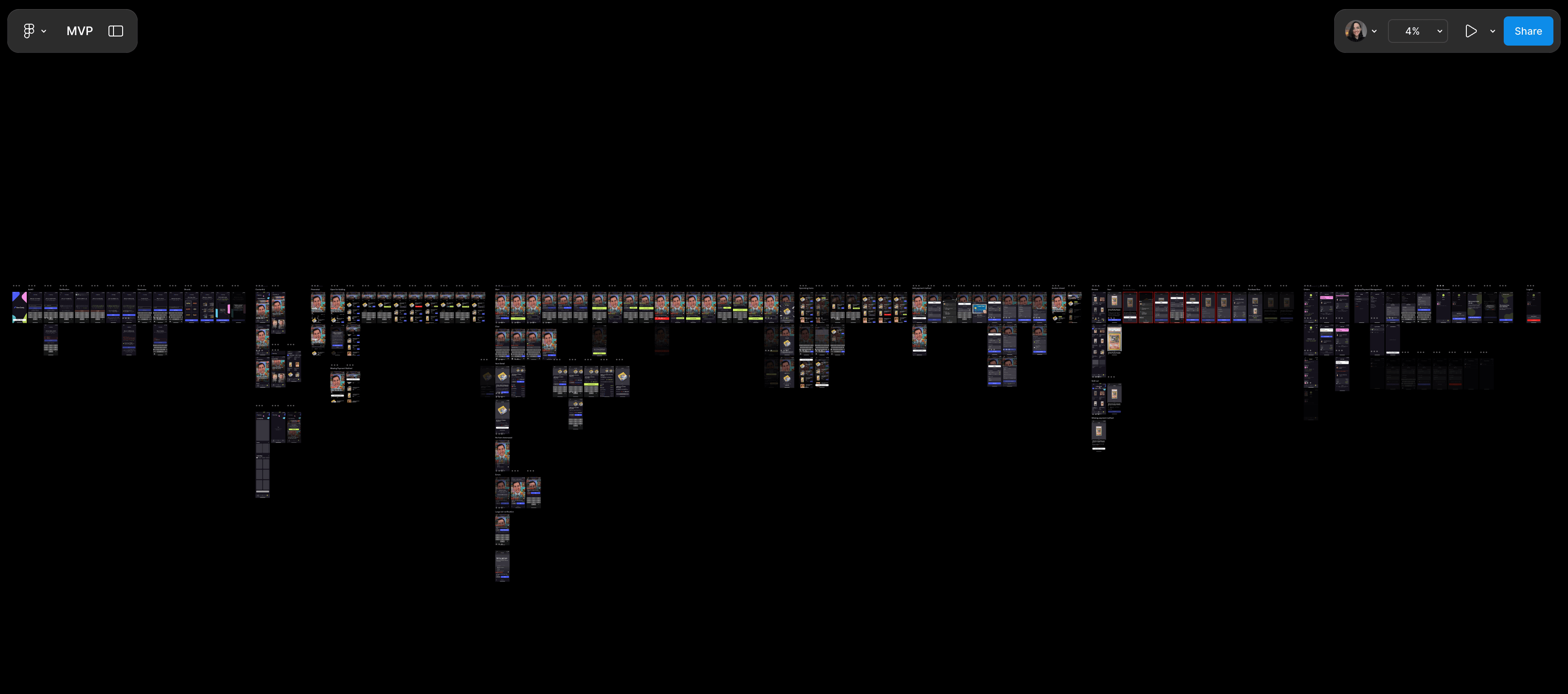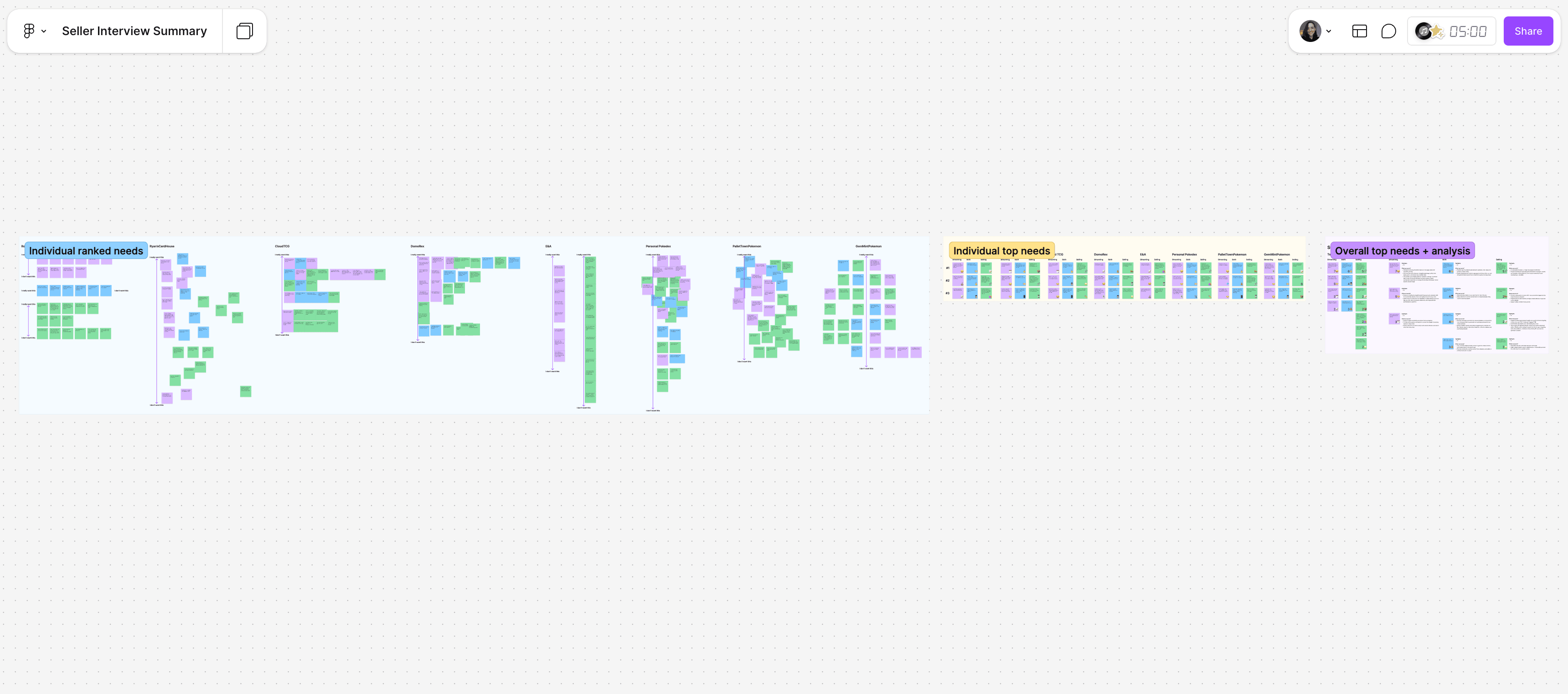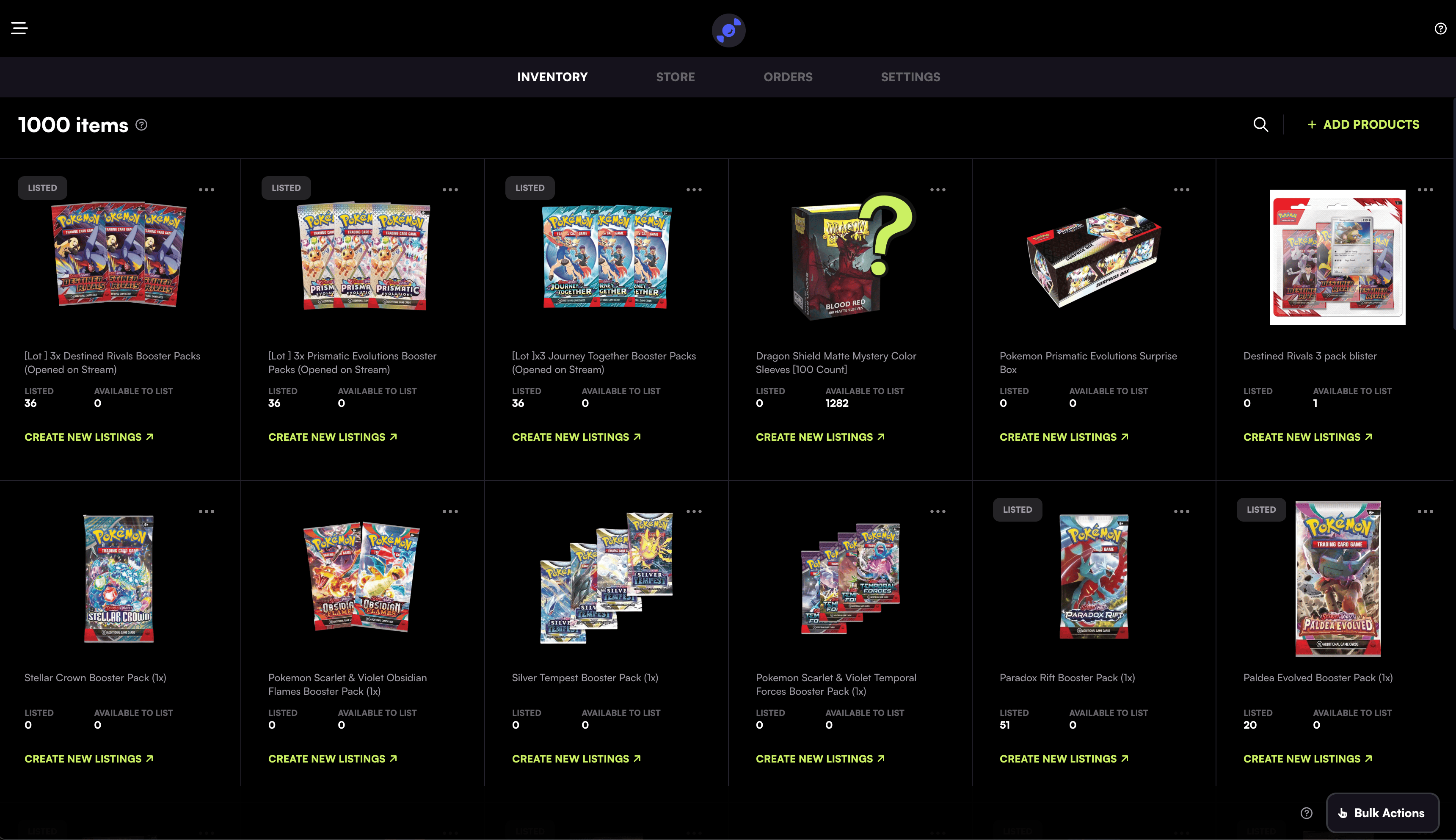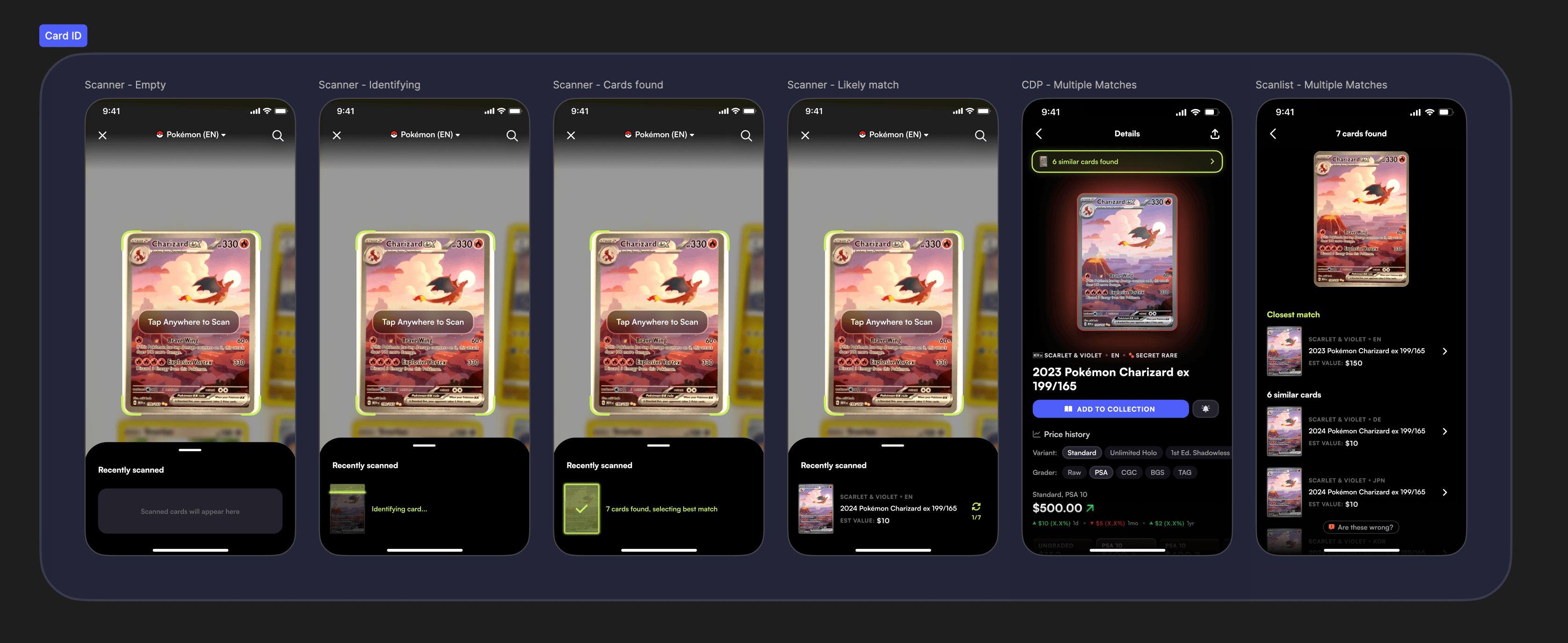From 0 → 1
When I joined, about two months after the founders kicked off their partnership, we didn't have much: no product, no users, just a small Discord community and a lightweight brand + concept kit (h/t @Late Checkout). In those early days, the question of where to start loomed large, so I dove deep with the founders, surveyed our community, and sat down with big names in the space.
Takeaways
- Collectors were hungry for a safe space to buy
- Their love for creators like Leonhart (a co-founder) ran deep
- Tools for tracking collections were a huge, huge opportunity
Buying in 2022 was incredibly tough, with shortages and counterfeits everywhere you looked. Our little team was heavy on Pokémon and e-comm smarts, so we started there, building an MVP marketplace with authenticated product available 24/7 and a live box-break and auction experience featuring creators like Leonhart, DeepPocketMonster, and PokeChloe.

I used this moment to convert our brand guide into a design token toolkit in Figma, giving myself and our engineers a polished, predictable catalog to work with as we pushed the delivery pedal to the floor for a fall launch.
By the end of that year we'd earned our first six figures in sales and a thousand MAUs.


